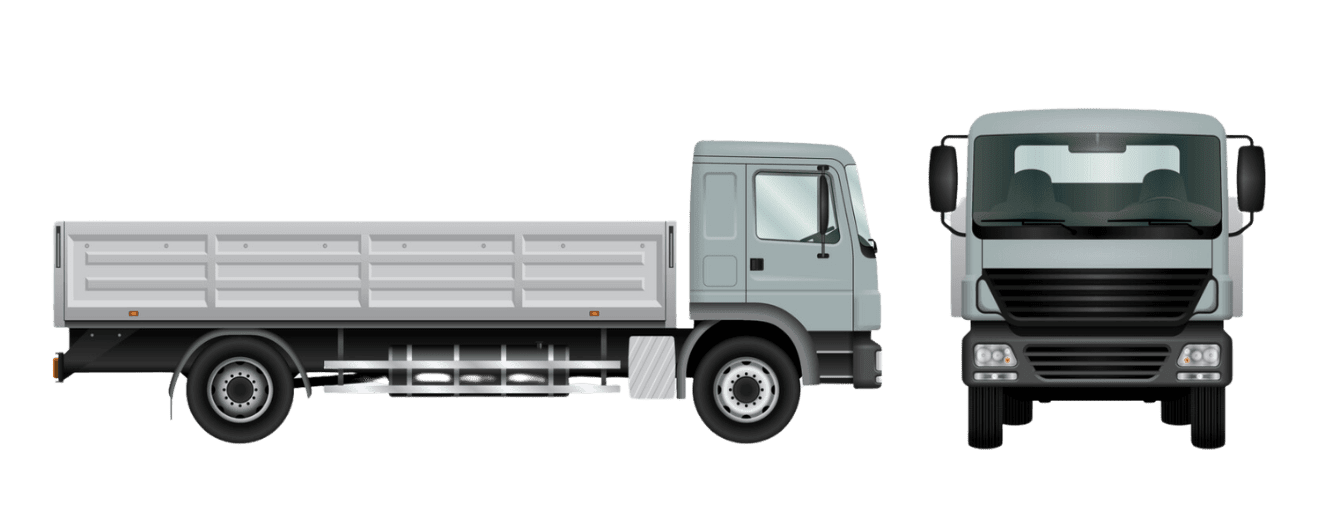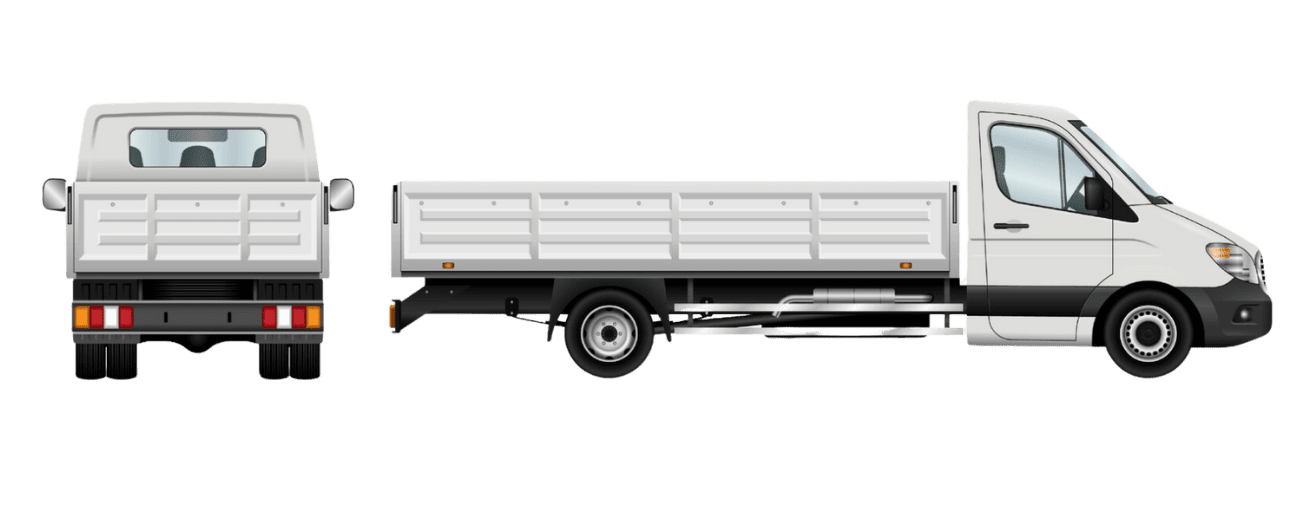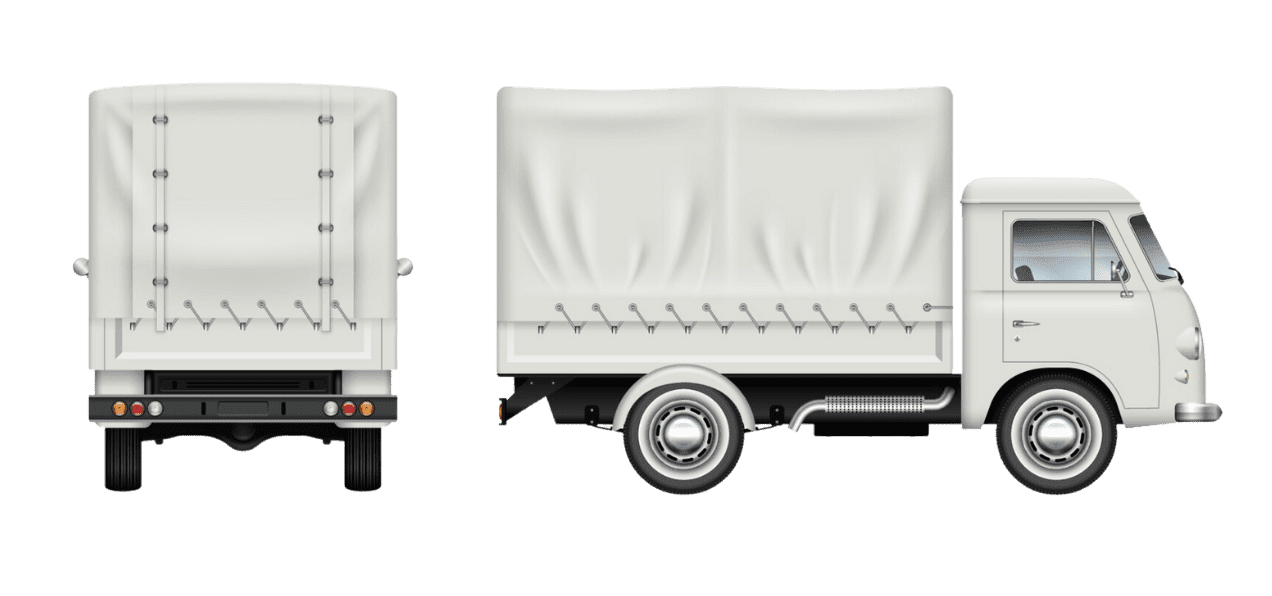- Car finance Car finance
- Motorbike finance Motorbike finance
- Van finance Van finance
- How it works How it works
- FAQs and guides FAQs and guides
- About us About us
- Home
- Blog
- Researching a Vehicle
- How to choose the right type of van
How to choose the right type of van
Updated: Thursday, 14 March 2024
With so many van types on the market, finding the right one can be tricky. If you need to use the van for work, it’s important you buy the correct size. If it’s too small, you may not be able to hold all of your equipment or cargo, but if it’s too big, it may be difficult to manoeuvre and expensive to run.
Before you start looking for van finance, you need to know what’s available and most suitable for your needs. Our guide explores the different types of vans, from box vans to Luton vans, so you can make the right decision for your budget and business.
What are the different types of vans?
There are more than ten types from a variety of different van brands, all designed for different purposes and carrying different cargo sizes. Each van has unique features and benefits, from small car-derived vans to large Luton vans.
How to find the most suitable van type
When you’re deciding which van to buy, you need to consider several factors, including:
- Purpose: think about why you need the van and what you’ll use it for, whether it’s for business, getting around to job sites or general transportation.
- Budget: consider the type of van you can afford, including upfront costs, van insurance, fuel, and maintenance.
- Size and capacity: think about the space you’ll need in your van, not just for any passengers but also for cargo.
- Features: if you are driving long distances in your van, consider whether features like cruise control, navigation systems, and cargo organisation solutions are needed.
- Driving needs: how and where you’ll be driving the van will affect what you need. For example, smaller vans may be more appropriate for navigating and parking on tight city streets.
What are the most popular UK van types?
Medium vans are the most popular in the UK, with the Ford Transit Custom, Vauxhall Vivaro, and Volkswagen Transporter being amongst the best sellers in 2023 according to SMMT. Meanwhile, large vans, like the Mercedes-Benz Sprinter and Ford Transit, and pickups, such as the Ford Ranger and Toyota Hilux, also proved popular.
Let’s explore each of the types of van in more detail, so you can understand which is right for you.
With so many van types on the market, finding the right one can be tricky. If you need to use the van for work, it’s important you buy the correct size. If it’s too small, you may not be able to hold all of your equipment or cargo, but if it’s too big, it may be difficult to manoeuvre and expensive to run.
Before you start looking for van finance, you need to know what’s available and most suitable for your needs. Our guide explores the different types of vans, from box vans to Luton vans, so you can make the right decision for your budget and business.
What are the different types of vans?
There are more than ten types from a variety of different van brands, all designed for different purposes and carrying different cargo sizes. Each van has unique features and benefits, from small car-derived vans to large Luton vans.
How to find the most suitable van type
When you’re deciding which van to buy, you need to consider several factors, including:
- Purpose: think about why you need the van and what you’ll use it for, whether it’s for business, getting around to job sites or general transportation.
- Budget: consider the type of van you can afford, including upfront costs, van insurance, fuel, and maintenance.
- Size and capacity: think about the space you’ll need in your van, not just for any passengers but also for cargo.
- Features: if you are driving long distances in your van, consider whether features like cruise control, navigation systems, and cargo organisation solutions are needed.
- Driving needs: how and where you’ll be driving the van will affect what you need. For example, smaller vans may be more appropriate for navigating and parking on tight city streets.
What are the most popular UK van types?
Medium vans are the most popular in the UK, with the Ford Transit Custom, Vauxhall Vivaro, and Volkswagen Transporter being amongst the best sellers in 2023 according to SMMT. Meanwhile, large vans, like the Mercedes-Benz Sprinter and Ford Transit, and pickups, such as the Ford Ranger and Toyota Hilux, also proved popular.
Let’s explore each of the types of van in more detail, so you can understand which is right for you.
Car-derived vans
A car-derived van is a mix of a car and a van. It has more space than a car but cannot carry heavy loads and equipment like a van. Also known as a panel van, this van type is built on a car chassis, making it easy to drive and ideal for trades like decorators or businesses that make small deliveries.
Some popular examples include the Ford Fiesta, Vauxhall Corsa and Dacia Duster.

Car-derived vans
A car-derived van is a mix of a car and a van. It has more space than a car but cannot carry heavy loads and equipment like a van. Also known as a panel van, this van type is built on a car chassis, making it easy to drive and ideal for trades like decorators or businesses that make small deliveries.
Some popular examples include the Ford Fiesta, Vauxhall Corsa and Dacia Duster.

Crew vans
These vans are designed to carry larger numbers of passengers and some cargo. A crew van usually has a second row of seats behind the driver and ample cargo space in the back.
Also known as combi vans, bands can use crew vans to transport their instruments and members and are popular choices for people converting their vans into campers.
Examples of crew vans include the Mercedes-Benz Vito, Peugeot Expert, and Toyota Proace.

Crew vans
These vans are designed to carry larger numbers of passengers and some cargo. A crew van usually has a second row of seats behind the driver and ample cargo space in the back.
Also known as combi vans, bands can use crew vans to transport their instruments and members and are popular choices for people converting their vans into campers.
Examples of crew vans include the Mercedes-Benz Vito, Peugeot Expert, and Toyota Proace.

Small vans
These vans offer good versatility and are easy to manoeuvre, making them solid choices for city driving as they can carry more cargo than panel vans without being too difficult to park.
Small vans are commonly used by tradespeople, like electricians and plumbers, as they offer a good balance of car-like driving with the practicality of a van.
Some popular examples of small vans include the Volkswagen Caddy Cargo, Mercedes-Benz Citan, and Citroen Berlingo.

Small vans
These vans offer good versatility and are easy to manoeuvre, making them solid choices for city driving as they can carry more cargo than panel vans without being too difficult to park.
Small vans are commonly used by tradespeople, like electricians and plumbers, as they offer a good balance of car-like driving with the practicality of a van.
Some popular examples of small vans include the Volkswagen Caddy Cargo, Mercedes-Benz Citan, and Citroen Berlingo.

Medium vans
Medium vans are the UK’s most popular van type. They’re so popular because they can transport most cargo and are highly versatile, without being too difficult to park. Tradespeople and delivery drivers frequently use these vans because of their size and reliability.
Some popular examples of medium vans include the Ford Transit, Renault Trafic, and VW Transporter.

Medium vans
Medium vans are the UK’s most popular van type. They’re so popular because they can transport most cargo and are highly versatile, without being too difficult to park. Tradespeople and delivery drivers frequently use these vans because of their size and reliability.
Some popular examples of medium vans include the Ford Transit, Renault Trafic, and VW Transporter.

Large vans
Popular for their immense cargo space and longer wheelbase, large vans are the biggest vehicles available without getting into a Luton or Box van.
Perfect for couriers and removal companies, large vans can carry an ample amount of cargo and have higher, wider side and rear doors than a small or medium van. This makes them more suitable for people who need to carry lots of cargo.
Some popular examples of large vans include the Mercedes-Benz Sprinter, Peugeot Boxer, and Renault Master.

Large vans
Popular for their immense cargo space and longer wheelbase, large vans are the biggest vehicles available without getting into a Luton or Box van.
Perfect for couriers and removal companies, large vans can carry an ample amount of cargo and have higher, wider side and rear doors than a small or medium van. This makes them more suitable for people who need to carry lots of cargo.
Some popular examples of large vans include the Mercedes-Benz Sprinter, Peugeot Boxer, and Renault Master.

Pickup trucks
Pickups have grown in popularity due to their practical appeal and the fact they still drive like a car. Pickup trucks carry two to six people and retain a large load space on the flatbed for tools and equipment.
Commonly used by farmers and gardeners, who need easy access to the back of the truck and can benefit from the elevated ground clearance, pickup trucks are also tough and sturdy enough for offroad driving.
Some popular examples of pickup trucks include the Ford Ranger, Nissan Navara, and Toyota Hilux.

Pickup trucks
Pickups have grown in popularity due to their practical appeal and the fact they still drive like a car. Pickup trucks carry two to six people and retain a large load space on the flatbed for tools and equipment.
Commonly used by farmers and gardeners, who need easy access to the back of the truck and can benefit from the elevated ground clearance, pickup trucks are also tough and sturdy enough for offroad driving.
Some popular examples of pickup trucks include the Ford Ranger, Nissan Navara, and Toyota Hilux.

Tipper vans
Similar to a pickup, a tipper van has a flatbed, but it also includes a hydraulic arm that allows the cargo area to rise at the front. This means that cargo, like stone, can slide down and off the back of the van.
Designed to carry cargo that’s too heavy or big to fit in a large van, a tipper offers all of the convenience of a pickup and the capacity of a van. Another benefit is that the side panels of a tipper can be folded down, so goods can be loaded from either the rear or side of the van.
Some popular examples of tipper vans include the Ford Transit Tipper, Citroen Relay Tipper, and VW Crafter Tipper.

Tipper vans
Similar to a pickup, a tipper van has a flatbed, but it also includes a hydraulic arm that allows the cargo area to rise at the front. This means that cargo, like stone, can slide down and off the back of the van.
Designed to carry cargo that’s too heavy or big to fit in a large van, a tipper offers all of the convenience of a pickup and the capacity of a van. Another benefit is that the side panels of a tipper can be folded down, so goods can be loaded from either the rear or side of the van.
Some popular examples of tipper vans include the Ford Transit Tipper, Citroen Relay Tipper, and VW Crafter Tipper.

Dropside vans
Dropside vans have a flatbed like tipper vans, but they do not have a hydraulic arm to raise the front of the cargo area. Instead, it is just the sides and rear panels of the van that can be dropped down, meaning the van can be loaded more quickly.
Some popular examples of dropside vans include the Iveco Daily Dropside, Fiat Doblo Dropside, and the Vauxhall Movano Dropside.

Dropside vans
Dropside vans have a flatbed like tipper vans, but they do not have a hydraulic arm to raise the front of the cargo area. Instead, it is just the sides and rear panels of the van that can be dropped down, meaning the van can be loaded more quickly.
Some popular examples of dropside vans include the Iveco Daily Dropside, Fiat Doblo Dropside, and the Vauxhall Movano Dropside.

Luton vans
These vans feature a cargo space extending over the driver’s cab, offering the driver a huge cargo area suitable for tall and awkwardly shaped items.
Named after the town where they were first manufactured, Luton vans are commonly used for house moves as they are designed to carry furniture, appliances, and other large items.
Some popular examples of Luton vans include the Volkswagen Crafter Luton Van, Mercedes-Benz Sprinter Luton, and Citroen Relay Luton.

Luton vans
These vans feature a cargo space extending over the driver’s cab, offering the driver a huge cargo area suitable for tall and awkwardly shaped items.
Named after the town where they were first manufactured, Luton vans are commonly used for house moves as they are designed to carry furniture, appliances, and other large items.
Some popular examples of Luton vans include the Volkswagen Crafter Luton Van, Mercedes-Benz Sprinter Luton, and Citroen Relay Luton.

Curtainside vans
The main feature of these vans is the curtained walls, which allow cargo to be loaded and unloaded quickly and kept protected from the elements while on the move.
These vans are popular with couriers who need to deliver items on pallets and keep their cargo dry (such as food).
Some popular examples of curtain-side vans include the Fiat Ducato, Citroen Curtainside van, and Mercedes-Benz Sprinter.

Curtainside vans
The main feature of these vans is the curtained walls, which allow cargo to be loaded and unloaded quickly and kept protected from the elements while on the move.
These vans are popular with couriers who need to deliver items on pallets and keep their cargo dry (such as food).
Some popular examples of curtain-side vans include the Fiat Ducato, Citroen Curtainside van, and Mercedes-Benz Sprinter.

Box vans
Box vans are characterised by having a separate cab and cargo area, with the cargo area being a standalone box.
This design means the cargo area can be wider than the cab space, maximising the van’s load capacity.
Some popular examples of box vans include the Vauxhall Movano Box Van, Iveco Daily Box Van, and Ford Transit Box Van.

Box vans
Box vans are characterised by having a separate cab and cargo area, with the cargo area being a standalone box.
This design means the cargo area can be wider than the cab space, maximising the van’s load capacity.
Some popular examples of box vans include the Vauxhall Movano Box Van, Iveco Daily Box Van, and Ford Transit Box Van.

Catering vans
Catering vans are used for storing, making, and selling food to customers. They are equipped with appliances to store, heat, and refrigerate food and drinks safely.
Some popular examples of catering vans include the Ford Transit, Mercedes Vito, and Citroen H.

Catering vans
Catering vans are used for storing, making, and selling food to customers. They are equipped with appliances to store, heat, and refrigerate food and drinks safely.
Some popular examples of catering vans include the Ford Transit, Mercedes Vito, and Citroen H.

Refrigerated vans
Refrigerated or temperature-controlled vans are specially designed to ensure cargo can be kept chilled while in transit. These vans vary in size, but all let the driver set the temperature depending on the cargo that’s being delivered.
Some popular examples of refrigerated vans include the Vauxhall Vivaro, Ford Transit Custom, and Mercedes-Benz Citan.

Refrigerated vans
Refrigerated or temperature-controlled vans are specially designed to ensure cargo can be kept chilled while in transit. These vans vary in size, but all let the driver set the temperature depending on the cargo that’s being delivered.
Some popular examples of refrigerated vans include the Vauxhall Vivaro, Ford Transit Custom, and Mercedes-Benz Citan.

Find your ideal van with van finance from Moneybarn
We have over 30 years of experience helping people with poor credit, so if you’ve been refused van finance with bad credit, we could help. We also help people who are self-employed and looking for van finance.
If you have a van in mind, great! Make sure it meets our lending criteria, and if it does, we’d love to help you onto a better road ahead. If not, don’t worry. Our friendly Direct Sales team can help you search for the right van for your needs.
See what your agreement could look like using our van finance calculator and our van buying guide.
Representative 30.7% APR.
Or, if you’d like to learn more, read out guide that explains how financing a van works.
Find your ideal van with van finance from Moneybarn
We have over 30 years of experience helping people with poor credit, so if you’ve been refused van finance with bad credit, we could help. We also help people who are self-employed and looking for van finance.
If you have a van in mind, great! Make sure it meets our lending criteria, and if it does, we’d love to help you onto a better road ahead. If not, don’t worry. Our friendly Direct Sales team can help you search for the right van for your needs.
See what your agreement could look like using our van finance calculator and our van buying guide.
Representative 30.7% APR.
Or, if you’d like to learn more, read out guide that explains how financing a van works.
Bringing you tips on buying and maintaining your vehicle to make life on the road less stressful.
More from Moneybarn...
For a better road ahead
Moneybarn is a member of the Finance and Leasing Association, the official trade organisation of the motor finance industry. The FLA promotes best practice in the motor finance industry for lending and leasing to consumers and businesses.
Moneybarn is the trading style of Moneybarn No. 1 Limited, a company registered in England and Wales with company number 04496573, and Moneybarn Limited, a company registered in England and Wales with company number 02766324. The registered address for these companies is: Athena House, Bedford Road, Petersfield, Hampshire, GU32 3LJ.
Moneybarn’s VAT registration number is 180 5559 52.
Moneybarn Limited is authorised and regulated by the Financial Conduct Authority (Financial Services reference No. 702781)
Moneybarn No. 1 Limited is authorised and regulated by the Financial Conduct Authority (Financial Services reference No. 702780)




